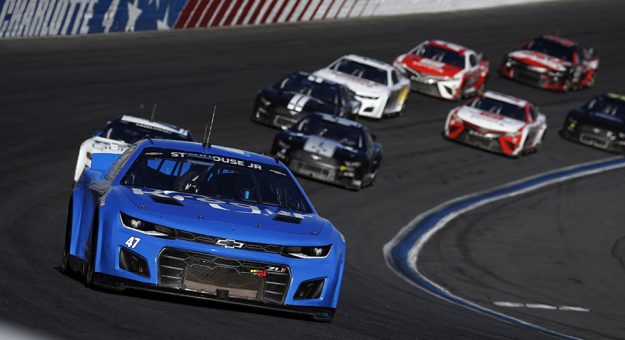CONCORD, N.C. — NASCAR officials confirmed plans to shift to a 670-horsepower engine package for the Next Gen race cars on Friday morning.
The news was revealed by NASCAR Executive Vice President and Chief Racing Development Officer Steve O’Donnell during a meeting with members of the media on the second day of a two-day Next Gen test at Charlotte Motor Speedway.
“I would say we are more than likely going with that number across all of our tracks,” O’Donnell said of the 670 horsepower package. “We’ve still got a few boxes to check post-test here where we get together with our OEMs (original equipment manufacturers) and the teams and confirm that is the direction we want to go with. Everything we’ve seen so far tells us that is the horsepower we want to target and go with.”
The move to a 670-horsepower engine package is a change in direction for NASCAR officials, who until Friday had been pushing forward with plans to utilize an engine package that topped out at 550 horsepower.
“I think the simple factor is how much drag is built into this car,” O’Donnell said when explaining the shift to 670 horsepower. “So when you look at a 550 package, to produce some of the similar results you saw, the horsepower levels would have be so low that we just don’t think it’s the right move at this point.
“You could certainly go out there and run 550 but from what we’ve seen in comparison from 550 to 670, we lean more toward 670. Certainly, a little bit more spread out when you restart a race, but with the tire wear and what Goodyear has been able to do, what you’re seeing is kind of that comers and goers that we used to have in racing and the ability to maintain speeds.”
One major goal of the 550 horsepower package was to help draw additional OEMs into the sport. O’Donnell believes a 670-horsepower package is still within the range that new OEMs would find appealing.
“I think it’s within a range. So if we go 670 that’s absolutely within a range to attract a new OEM,” O’Donnell said. “We’ve had discussions with a number of new OEMs and that factor is within that, so that wouldn’t be a detriment to someone coming into the sport.”
The 670-horsepower package is expected to be utilized at nearly all the tracks on the NASCAR Cup Series schedule. The lone exceptions will be Daytona Int’l Speedway and Talladega Superspeedway, with Atlanta Motor Speedway also being considered for the to-be-determined superspeedway package pending a test on Jan. 5-6 at the recently reconfigured track.
“The plan right now would be Atlanta would fall into superspeedway,” O’Donnell said.
The Next Gen test at Charlotte Motor Speedway that started Wednesday and continued Friday has allowed NASCAR and teams to test multiple aero packages to determine the final package that will be utilized next season.
Teams tested three different aero packages on Wednesday. A fourth package was scheduled to be tested Friday. A final decision on which package NASCAR will implement is expected to be announced after NASCAR analyzes the data from the test at Charlotte.
“Depending on what comes out of today, we’re 95 percent there as far as parts and pieces,” said Dr. Eric Jacuzzi, NASCAR managing director of aerodynamics and vehicle performance. “Picking the final aero package, I think early next week we’ll be there.”
